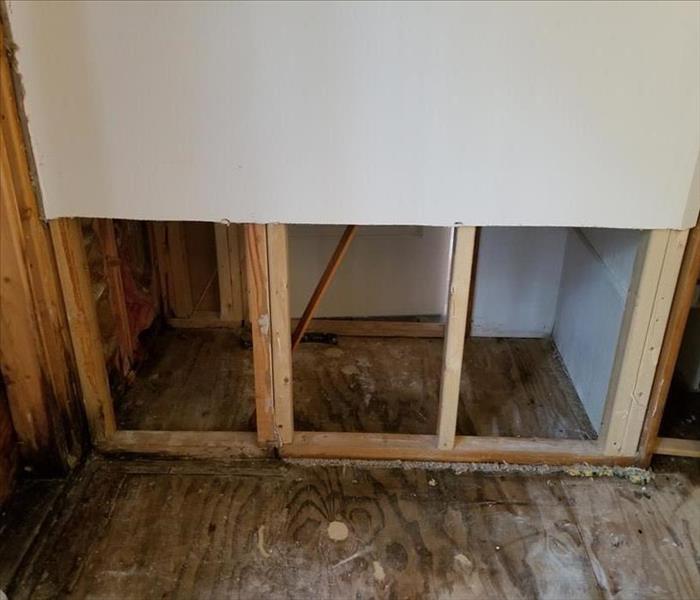What Is the Purpose of a Flood Cut?
4/29/2020 (Permalink)
 Storm damage restoration experts can recommend whether a flood cut is necessary at a residence in Peoria, AZ
Storm damage restoration experts can recommend whether a flood cut is necessary at a residence in Peoria, AZ
Learn More About the Role of Flood Cuts
Restoration professionals use flood cuts to remove contaminated building materials and promote drying. Flood cuts are made 12 inches above the flood line. In the event that two feet of contaminated water was left standing after flooding at a residence in Peoria, AZ, a flood cut would be made at a height of three feet. Learn more about the role of flood cuts in damage cleanup and restoration.
Determining Moisture Levels
A flood cut makes it easier to tear out drywall and insulation saturated with flood water. There are several reasons to remove contaminated porous building materials:
- Difficulty of drying
- Difficulty of disinfection
- Recontamination risk
Drywall and insulation are difficult to clean and should not be retained after flooding. A flood cut makes it possible to determine the extent of damage before removing and replacing damaged building materials.
Tearing Out Drywall
Once the height of a flood cut has been determined based on the height of standing water, damage restoration professionals will make a cut and remove damaged drywall and insulation. A cut and tear out should be performed prior to cleaning and disinfection to avoid reintroducing contamination.
Promoting Faster Drying
One of the major benefits of a flood cut is that removing saturated drywall and insulation makes it easier to dry out structural components that do not require replacement. Gaining access to the interior of a wall cavity is helpful for reducing the risk of hidden mold growth. Insulation and drywall should not be reinstalled until the structure is completely dry.
Storm damage restoration experts can recommend whether a flood cut is necessary at a residence in Peoria, AZ. These trained professionals can make a cut at the right height to clear out contaminated building materials. A flood cut can reduce the risk of secondary or structural damage after flooding introduces contaminated water into the interior of a home.



 24/7 Emergency Service
24/7 Emergency Service